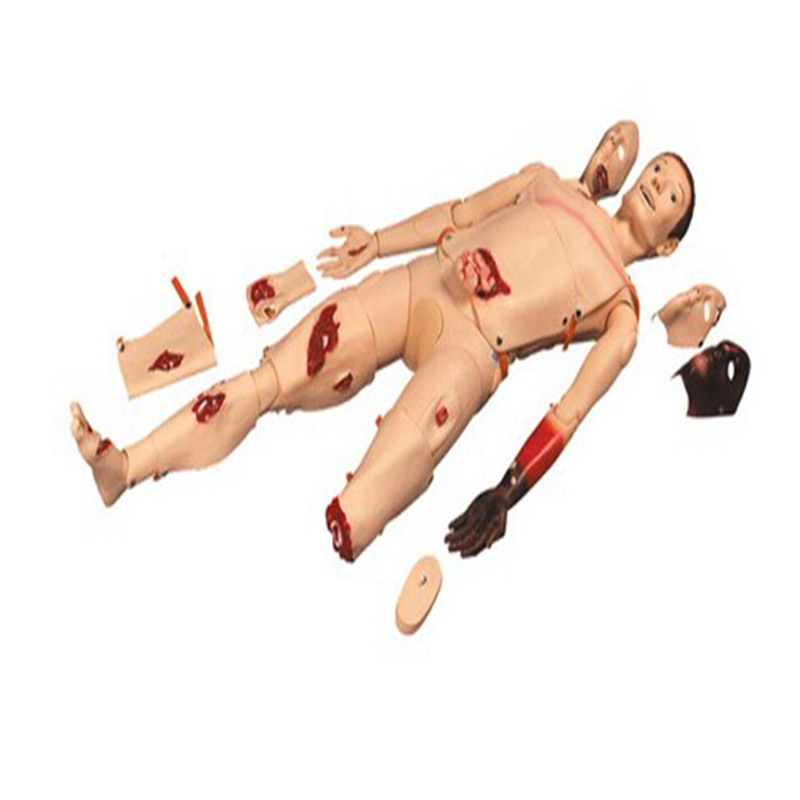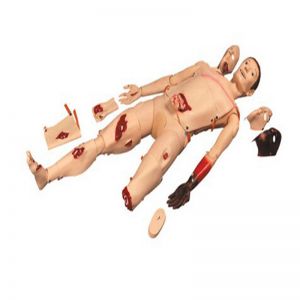Trauma simulator, as an advanced medical teaching tool, plays a decisive role in modern medical education and first aid training. It can not only provide a realistic simulation environment to help medical staff perform practical operations under safe and controllable conditions, but also effectively improve first aid skills and reduce possible errors during actual treatment.

First of all, the trauma simulator can simulate various complex trauma situations, including bleeding, fractures, fractures, etc., allowing medical staff to perform practical operations in a simulated environment. This simulated practice method can not only enhance the proficiency of medical staff in trauma treatment, but also make them more calm and comfortable during the actual treatment process, improving treatment efficiency.
Secondly, the trauma simulator also has the function of simulating open fractures and fracture treatment in various parts of the body. This highly realistic simulation enables medical staff to understand trauma situations more intuitively and learn and master correct treatment methods and techniques. At the same time, by simulating the trauma of different parts, medical staff can also develop more reasonable treatment plans based on the characteristics of different parts.
In addition, the trauma simulator can also simulate the cleaning, disinfection, hemostasis, bandaging, fixation, transportation and other processes of the trauma site. These processes are crucial in the actual treatment process, but they are often the most error-prone areas. By simulating these processes, medical staff can continuously sum up experience in practice, improve operating skills, and ensure that these key steps can be completed quickly and accurately during actual treatment.
In addition, trauma simulators are also widely used in various departments such as the military, firefighting, police, aviation, coal mining, and construction, as well as various first aid scenes such as fires, mountains, high altitudes, oil pipelines, tunnels, collapsed buildings, ruins, explosions, etc. This wide range of applications makes the trauma simulator an indispensable first aid training tool in modern society.
In addition to their practical applications, trauma simulators also play an important role in teaching assessment. By evaluating the performance of medical staff in simulated environments, their skill levels and deficiencies can be objectively understood, and more targeted training programs can be developed. This way of promoting teaching through assessment can not only improve the skill level of medical staff, but also promote the continuous progress of medical education.
In summary, trauma simulators, as an advanced medical teaching tool, play an important role in modern medical education and first aid training. It provides medical staff with a safe, controllable, efficient and practical learning platform through a realistic simulation environment, diverse simulation functions and a wide range of applications. In the future, with the continuous development and advancement of medical technology, trauma simulators will be more intelligent and personalized, providing more comprehensive and in-depth support for medical education and first aid training.

